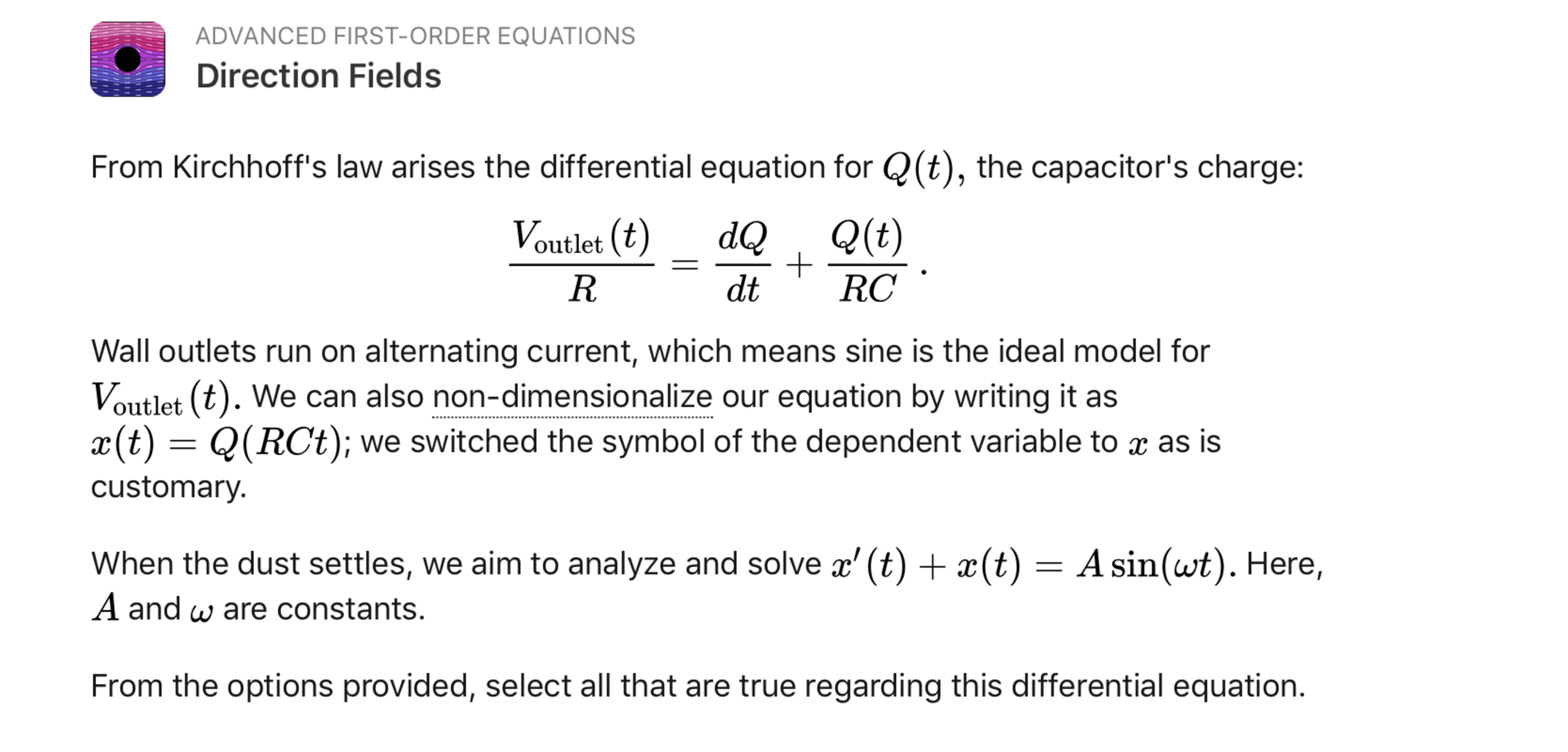Questions on how to non-dimensionalize a equation and what it means
I’m learning differential equation. In direction field page 3 of advanced differential equation, the authors mentioned “We can also non-dimensionalize our equation by writing it as x(t)=Q(CRt); we switched the symbol of the dependent variable to x as is customary.”
I’m quite puzzle with x(t). What exactly is x(t)? Is it a function of C times R times t or a function of C, R and t? How to go from V_{outlet}/R=dQ/dt+Q/RC to Asin(wt)=x’+x?

No vote yet
1 vote
Easy Math Editor
This discussion board is a place to discuss our Daily Challenges and the math and science related to those challenges. Explanations are more than just a solution — they should explain the steps and thinking strategies that you used to obtain the solution. Comments should further the discussion of math and science.
When posting on Brilliant:
*italics*or_italics_**bold**or__bold__paragraph 1
paragraph 2
[example link](https://brilliant.org)> This is a quote# I indented these lines # 4 spaces, and now they show # up as a code block. print "hello world"\(...\)or\[...\]to ensure proper formatting.2 \times 32^{34}a_{i-1}\frac{2}{3}\sqrt{2}\sum_{i=1}^3\sin \theta\boxed{123}Comments
The original differential equation has physical constants in it that need to be carried through all the calculus and algebraic manipulation. This adds a layer of complication that can be removed by a common technique called "non-dimensionalization." Essentially, x(t) is directly related to the charge Q by a specific variable rescaling chosen to simplify the form of the diff eq. The physical constants can be restored at the very end of the calculation when all the calculus is done.
In short, x(t) and Q represent the same thing, just in different units.
The problem has been updated to include more explicit steps in the non-dimensionalization process. Hope this helps!
Hi Patrick,
Thank you so much for the explicit procedure of the process.
Just curious, how did you come with x(t)? Do you analyze the units?
Log in to reply
No problem! Yes, analyzing the physical units is one way to come up with x(t). Another way is to let x(t) = a Q(b t) and to use the differential equation to figure out what the unknown constants a and b should be in order to "clean up" x's equation. Specifically,
Q'(t) + 1/(R C) Q(t) = V{0}/R sin( omega{0} t )
and the chain rule tell us that
x'(t) = a b Q'(b t) = a b [ V{0}/R sin(omega{0} b t) - 1/(RC) Q(bt) ] = ab V{0}/R sin(omega{0} t) - b/(RC) [ a Q(bt) ] = ab V{0}/R sin(omega{0} b t) -b/RC x(t)
or
x'(t) + b/RC x(t) = a b V{0} /R sin(omega{0} b t).
If we choose b = RC, the lefthand side becomes x'(t) + x(t); we've managed to eliminate the physical constants there. On the right,
a b V{0} /R sin(omega{0} b t ) = a (RC) V{0}/R sin(omega{0} RC t) = a C V{0} sin(omega{0} R C t).
We have the freedom to choose a = 1/( C V{0}); if we define omega = omega{0} RC, then the equation for x(t) is
x'(t) + x(t) = sin(omega t).
Hope this helps!